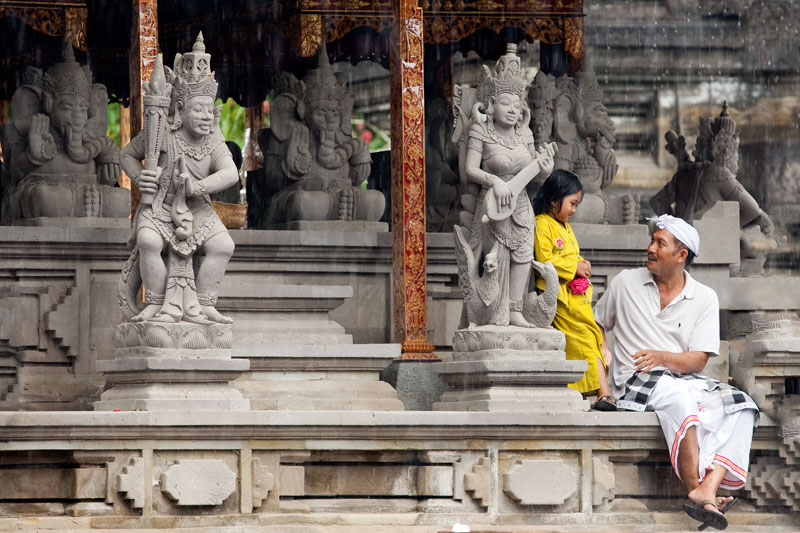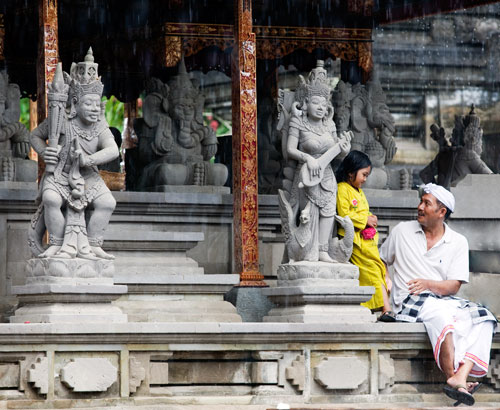Another post about the repetition of forms (shapes, objects, even colours), and how pleasing it is to the eye when you see such repetition in an image. (The previous post on this subject can be seen at this link).
The original image was taken in the grounds of the main temple at Tampaksiring, north of Ubud in Bali. It’s a major pilgrimage spot by virtue of the holy springs that bubble up from the ground, and people come from all over the island to pray and have ritual baths at the temple. At the time of the photo there was a heavy rain shower in progress, and everyone had retreated to the shelter of the several open pavilions in the temple grounds. (You can make out some falling rain on the right of the photo.) While waiting for the rain the stop, this man and his daughter carried on a quiet and languid conversation.
The photo was actually taken last year, but I have recently reworked it in preparation for A3+ (or possibly A2) size printing. The photo is one that I have chosen to put into my exhibition of Bali ritual/ceremonial photos at PhotoAccess here in Canberra early next year (opening night 24 February – put it into your calendars!)
While working on it I realised that, by cropping the original differently, making it a little wider, I could gain some nice pairs of repeats across the image: two people, two stone gods, and two Ganesh elephant statues. Somehow the photo is made to look more complete, to ‘cohere’ better, by emphasising these repetitions. Although it now includes an additional object, it actually looks simpler overall. Below is the original cropped version for comparison.
I don’t know why we like to find recurring patterns in images – but that’s not going to stop me speculating! Presumably it’s due to the way that the human brain processes visual sensory data, instantly applying pattern recognition to quickly interpret meaning from the raw image input. At some level below conscious thought we derive some small pleasure or reward when we can make out replicated shapes in an image.
You could imagine that it conferred some evolutionary advantage on individuals or populations that first had this perceptual skill, allowing them to better and quicker identify threats and opportunities in the world as they saw and experienced it. Over thousands of generations, through the process of natural selection, more of these ‘gifted’ individuals survived to have the relevant genes replicated, and so over millennia we got better at it as a species. Similar development of pattern recognition has no doubt occurred within non-human species too – especially for use in hunter/prey contexts.
Anyway, enough digression. The other thing I did to simplify the image, at the cost of its documentary authenticity, was to remove (via Photoshop) an obese western tourist in bright t-shirt and shorts who was sitting just to the left of the father in the picture i.e. in the bottom right corner). Believe me, the image was substantially improved by getting rid of him!
You can see more images from that visit to the Tampaksiring temple on the main Jokar web site in this folder.


